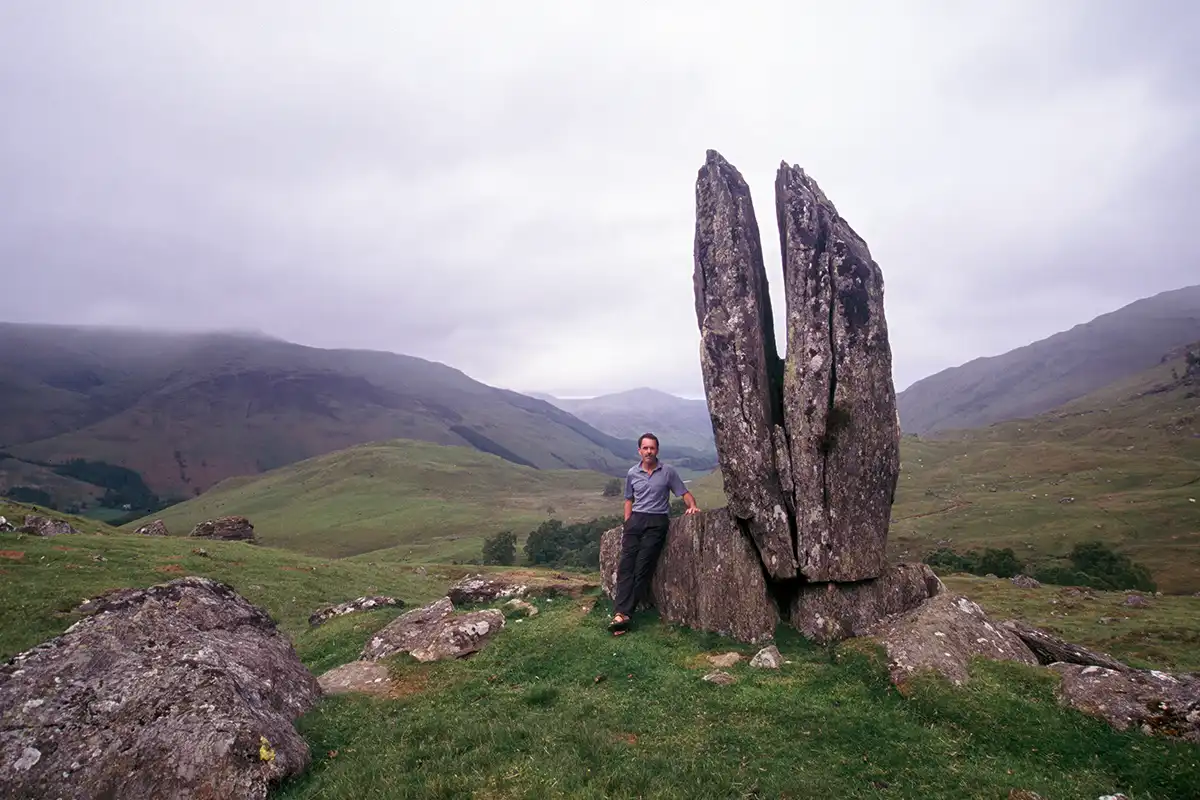Praying Hands of Mary, Glen Lyon
Nestled within the heart of Glen Lyon, often hailed by Sir Walter Scott as the “longest, loneliest, and loveliest glen in Scotland,” stands a striking natural wonder known as the Praying Hands. This enigmatic rock formation, also referred to as Fionn’s Rock or the Praying Hands of Mary, captivates visitors with its unique shape and the rich tapestry of history and folklore that surrounds it. Perched approximately 600 meters above the glen floor, the two upright stones resemble a pair of hands raised in supplication, their tips nearly touching, creating a visual that is both serene and mysterious. Located in Perthshire, Scotland, this site offers not only a breathtaking view of the glen but also a portal into Scotland’s ancient Celtic past.
The origins of the Praying Hands are shrouded in speculation. Some geologists suggest it could be a glacial erratic, a remnant of the Ice Age deposited by retreating glaciers. However, the precision of its split and its evocative form challenge such a straightforward explanation. Instead, many turn to the realm of myth for answers. Local legend attributes the formation to Fionn mac Cumhaill, the Celtic hero known as Finn McCool in English lore. It is said that Fionn, with his superhuman strength, fired an arrow that cleaved the stone in two, leaving behind this enduring monument. This tale ties the rock to Scotland’s pre-Christian heritage, where natural features often held spiritual significance, serving as markers of the sacred landscape revered by the Celts.
The name “Praying Hands of Mary” introduces a Christian layer to the site’s identity. Some historians connect it to St. Adamnan, a 7th-century saint who traveled from Iona to establish Christian outposts in pagan territories like Glen Lyon. The glen, possibly named after Lugh, the Celtic sun god, was a prime target for early missionaries seeking to overlay Christian symbolism onto ancient sites. The rock’s prayer-like appearance may have inspired this association, blending pagan and Christian narratives into a single, enduring symbol. Whether raised by human hands in the Neolithic period or shaped by nature, the formation stands as a testament to the glen’s layered history.
Visiting the Praying Hands is an adventure in itself. Accessible from the hamlet of Camusvrachan or Bridge of Balgie, the shorter route begins at a bridge near Camusvrachan, nine miles west of Fortingall. A rough track winds up Gleinn Da-Eigg, past cascading waterfalls and quaint cottages, rewarding hikers with panoramic views of Glen Lyon’s 34-mile expanse. The site’s remote location enhances its mystique, offering solitude amid rugged beauty. Photographers and hikers alike are drawn to its dramatic silhouette, especially in the soft light of late afternoon, when the glen glows with an ethereal warmth.
The Praying Hands transcends mere geology; it embodies the spirit of Glen Lyon—a place where nature, myth, and history converge. Whether seen as a gift from the glaciers, a feat of a legendary warrior, or a silent prayer etched in stone, it invites contemplation. In a glen celebrated for its isolation and charm, this formation stands as a quiet sentinel, whispering tales of Scotland’s ancient soul to those who pause to listen.

Martin Gray is a cultural anthropologist, writer and photographer specializing in the study of pilgrimage traditions and sacred sites around the world. During a 40 year period he has visited more than 2000 pilgrimage places in 160 countries. The World Pilgrimage Guide at sacredsites.com is the most comprehensive source of information on this subject.

